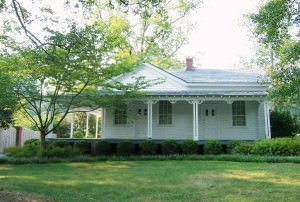
The Pace House, an antebellum property originally owned by one of Vinings’ earliest families, has recently been nominated for designation on the National Register of Historic Places. On Fri., Jan. 30, 2009, the nomination went before the Georgia National Register Review Board and was unanimously approved at the state level. The Georgia Historic Preservation Division will now prepare the nomination to be sent to the National Park Service (NPS) for approval at the national level.
In late 2007, the Vinings Historic Preservation Society (VHPS), which now owns and maintains the Pace House, began its endeavors to nominate the property for listing on the National Register. Two Georgia State graduate students, Stephanie Cherry and Kimberly Wescott, volunteered their time and worked diligently on the nomination, which they completed in late 2008.
It is a lengthy and time-consuming process to be designated as one of the historic locations on the National Register, which was created by the National Historic Preservation Act of 1966 to recognize significant properties. A nomination requires documentation that includes a detailed description of the property. This narrative must include the history, context and historic and/or architectural significance. After this documentation is prepared, the nomination must be approved by the state preservation board. If it is approved by the state board, it will be sent to Washington, D.C. for final approval by the NPS.
The Pace House was listed on the Cobb County Register of Historic Places in 2004.
The VHPS acquired the property from Ruth Carter Vanneman, great-granddaughter of Solomon Pace, upon her death in 1992. The VHPS began an intensive renovation of the Pace House in 1998, and the house was opened as a special events facility in 1999 and currently functions as such.
The mission of the VHPS is to preserve the historic spirit and structures of Vinings which include the Pace House, Old Pavilion and Vinings Center. It also seeks to educate the public on Vinings’ vibrant history.
